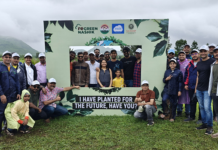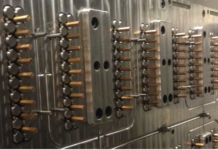
Farming is a profession where a person works to feed others while working for a secure future for one’s family. Yet, because of the strenuous work, and low disposable income, the next generations are not expressing interest in taking up the jobs of their forefathers. If the practice persists, then soon farmlands will be sold and we will be reducing the landscape of arable land. The solution lies in addressing the persisting problems that are dissuading younger people from taking up agriculture as a profession. The prominent problem these days is climatic change that has impacted the growing seasons and drastically reduced the number of days when plants can flourish and nourish. Additionally, cold regions are experiencing a drop in temperature and plants are dying because of frost. However, these problems and much more can easily be overcome by using greenhouse heating systems.
Colder climates can disrupt the plant enzyme activity and nutrient transportation between cells is hampered. As a result, plants wither and die. With no control over external climates, using greenhouses is the most viable option for farmers who can not just protect their plants, but also extend the growing periods through controlled climate units. Sensor-operated automated greenhouses give you the option not only to control the climate inside the perimeter but also to what you would like to plant. If you want to grow tropical fruit and live in a gardening zone that witnesses mighty cold winters, then you can make it possible with greenhouse farming. The spaces can be spruced up with a few devices to increase the productivity and the landscape for the crops. Here are a few tips for beginners:
- Control of Light & Heat
Plants need light to photosynthesize the nutrients absorbed through roots to release oxygen and sugar. Appropriate heat surrounding the plants will ensure that they don’t lose moisture. Spraying water to cool the plants without witnessing fungal attacks on plants is possible in open spaces. But in closed units, without dissipating the heat, if plants are watered, then there is every chance of fungal attack.
- Blackout System
Using automated fans, vents, and dehumidifiers will help in regulating the temperature and moisture levels. Shade curtains can be used to blackout to protect from excessive heat. Thermal curtains can be used to trap the heat from escaping from the unit. Grow lights at strategic points will help plants growing in spots that receive less light also thrive.
- Insulation
Extra efforts to insulate greenhouses located in colder regions are mandated when one is growing through the winter months. Insulation between the panels of a frame will trap the heat in a greenhouse that can be let out only through vents. Winterizing greenhouses that grow beyond the natural seasons helps in producing locally and cutting the costs of importing food.
- Tower Farming
Vertical farming using hydro and aquaponics not only helps in soil-less farming which has a better pest management solution, but also multiplies the yields to a mindblowing.
Conclusion:
Growing more food will no longer be a pressing problem of the nations and we can produce more than consumption levels with commercial greenhouse farming.


















